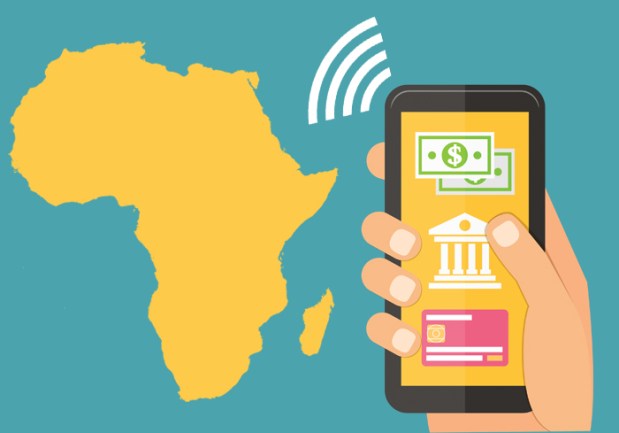MasterCard Delivers Mobile Banking Innovation To Africa

What’s the fastest growing mobile money market in the world? Africa. So much so that smartphone penetration across the continent is expected double in just four years – increasing from 17 percent in 2014 to 34 percent by the end of 2018. That’s of course good news for payments innovators: As more get their hands on these devices, mobile money matures at rapid pace, says Zahir Khoja, Vice President of Global Channels, Middle East and Africa, MasterCard. Following MasterCard’s recent announcement of its partnership with eTranzact, PYMNTS sat down with Khoja to find out how the program makes it easier for millions of Nigerians to receive remittances. What will happen to the state of mobile banking in Nigeria, where only 36 percent are banked, and how will this affect the $500 billion money transfer industry as a whole?
What’s the fastest growing mobile money market in the world? Africa. So much so that smartphone penetration across the continent is expected double in just four years – increasing from 17 percent in 2014 to 34 percent by the end of 2018. That’s of course good news for payments innovators: As more get their hands on these devices, mobile money matures at a rapid pace, says Zahir Khoja, Vice President of Global Channels, Middle East and Africa, MasterCard. Following MasterCard’s recent announcement of its partnership with eTranzact, PYMNTS sat down with Khoja to find out how the program makes it easier for millions of Nigerians to receive remittances. What will happen to the state of mobile banking in Nigeria, where only 36 percent are banked, and how will this affect the $500 billion money transfer industry as a whole?
Money Transfer is a $500 billion industry and growing. Given your experience, what factors are influencing the remittance market today, and how is this industry likely to evolve?
ZK: First, let’s start with the ubiquity of mobile phones. Africa is the fastest growing mobile money market in the world with mobile phone penetration expected to reach 79 percent by 2020 in Sub-Saharan Africa. For remittances, these mobile devices provide the platforms necessary for consumers to conduct safe and convenient electronic payments without having to travel to a bank branch or a physical money transfer location.
Next, there’s the maturing of mobile money. Researchers estimate that smartphone penetration in Africa will increase from 17 percent at the end of 2014 to 34 percent at the end of 2018 – doubling in just four years. This enables mobile money providers to meet the demand for services more sophisticated than airtime top-ups and closed-loop person-to-person transfers, already available today.
If you think about digital convergence, every device is becoming a commerce device. As payment technologies evolve, and mobile devices and data become more affordable, the convergence of solutions and platforms means that every device in Africa can become a commerce device. Consumers will also demand more channels as to where they can spend their digital currency received from abroad. For example, the EcoCash MasterCard debit card is an example of how blurring the lines between payment channels, solutions and devices create payment innovation.
Finally, governments are rapidly driving the conversation from cash to electronic payments. Given that remittances to Sub-Saharan Africa are expected to reach $34 billion in 2015, governments are driving the industry to digitize and formalize remittances flows. By doing this, governments can better understand remittance corridors and track cross-border payments. Less cash also means less cash leakages and more transparency in this sector. The addition of new electronic remittance services such as HomeSend has the potential to open up new remittance corridors, expand the scope of cashless money transfers, extend financial inclusion and grow the economy.
You have recenly annouced an agreement with eTranzact which provides mobile banking services to make international remittance services available to millions of consumers in Nigeria. What is the state of mobile banking in Nigeria?
ZK: In Nigeria, over 80 percent of the adult population has access to a mobile phone, while only 36 percent have a bank account. However, despite the fact that over 20 licensed operators provide mobile money services in Nigeria, mobile money is still in its early growth phase, with only a small percentage of Nigerians actively using it to transact.
To achieve scale, and realize the full potential of mobile money in Nigeria, interoperability between mobile money players, financial institutions, and card networks is needed. That’s also crucial to connect the informal to the formal economy, especially as money flows between banked and unbanked individuals – often in the form of international remittances – and between unbanked citizens and the formal sector including retailers, service providers, billers, public institutions like schools.
A good example of this is our partnership with eTranzact International plc, a leading pan-African mobile banking and payment services company, to make international remittance services available to millions of consumers in Nigeria through HomeSend.
HomeSend is a joint venture created by MasterCard, eServGlobal and BICS in 2014 that enables Business-to-Business, cross-border and cross-network value transfers through a single connection. It bridges the gap between various entities globally such as financial institutions, non-financial entities and mobile network operators, enabling Nigerians living and working abroad to send money from mobile money accounts, payment cards, bank accounts or cash outlets back home.
In addition to interoperability, the size of Nigeria’s remittance market (it’s the fifth largest in the world) provides a good opportunity for mobile money operators and other financial providers to attract new customers through innovative remittance solutions. Remittances also provide an importance source of funds (cash in), which will further drive usage of electronic payments and grow financial inclusion.
Remittance payments are essential for people in many countries, but with banks increasing the cost of making these types of transaction, several financial service providers are cutting off remittance payments to their customers. What other alternatives are there for money transfer from one country to another beyond remittance?
ZK: What we are seeing in large inbound remittance markets such as Nigeria is an expansion of remittance services offered by registered financial service providers and mobile money operators. Our partnership with eTranzact will enable citizens to securely receive international remittances into their eTranzact mobile money wallet or any major commercial bank account through HomeSend, expanding the industry in Nigeria.
As HomeSend provides one of the world’s most extensive cross-border money transfer networks, this partnership will provide consumers with new levels of flexibility and choice; provide foreign workers with an instantaneous and cost-effective solution for funds transfer and greatly improve the sending and receiving experience.
Sending remittances electronically using such services will also reduce the proportion of funds sent informally in cash – a popular alternative to formal channels – using friends, private couriers, or bus drivers operating between the countries. Funds sent and received via informal channels are vulnerable to theft, loss, corruption and shrinkage due to high charges levied for transporting cash between countries.
By digitizing and formalizing remittance payments, HomeSend is ensuring that Nigerians receive funds as intended, which means they have money available to pay bills quickly and easily, purchase additional airtime minutes or pay for goods without cash.
Let’s talk about regulation. As you are aware, in the U.S., regulatory pressures have caused a number of banks to discontinue their remittances operations. What obstacles did you have to overcome in Nigeria?
ZK: We work with our partners to ensure that our service complies with regulations in all sending and receiving countries.
For mobile financial services to play a role in achieving financial inclusion there needs to be a concerted effort from business and policy-makers to establish mobile payment ecosystems that provide access to a wider range of financial services including remittances. Mobile money operators, financial services providers and the government also need to work together to educate consumers and incentivize merchants, consumers, and other parties to adopt mobile money. Then we can ask, not how to make mobile remittance services available, but rather how to ensure that the industry works together to remain sustainable.

Zahir Khoja, Vice President of Global Channels, Middle East and Africa, MasterCard
Zahir Khoja is the Vice President, Global Channels at MasterCard focused on developing markets. In this capacity, he is responsible for strategies and relationships that will bring financial solutions to the unbanked and under-banked.
Mr. Khoja joined MasterCard in 2012 as the Chief Executive Officer for Mobile Payment Solutions (MPS), a joint venture between MasterCard and SMART Hub Inc. where he was responsible for deploying mobile solutions in Brazil, Egypt, Indonesia and Turkey.
Prior to that, Zahir was the Executive Director for Mobile Commerce at Roshan, Afghanistan’s leading total communications provider and President for M-Paisa, Afghanistan’s first commercially-licensed mobile money service – which he project managed in its entirety.
Zahir holds a Bachelor of Commerce Honors Degree in Marketing and Management Information Systems from the University of Ottawa in Canada, in addition to a Sales and Marketing Executive Program from the University of British Columbia.
